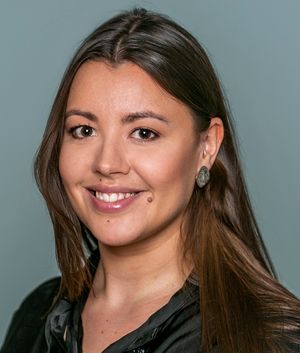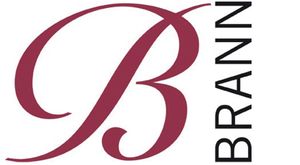Sweden: Trademark procedures and strategies

This is an Insight article, written by a selected partner as part of WTR's co-published content. Read more on Insight
Legal framework
Sweden’s relevant trademark laws include:
- the Trademarks Act (2010:1877), last amended in 2021 through SFS 2021:561; and
- the Trademarks Regulation (2011:594)
There are also several supplementary acts dealing with more specific elements of trademark law, including:
- the Law on the Protection of International Humanitarian Symbols (1953:771);
- the Law on the Protection of National Municipal Coats of Arms and Other Official Designations (1970:498); and
- the Regulation on the Protection of National Coats of Arms and Other Official Designations (1976:100).
Sweden’s trademark laws are based largely on international conventions and EU regulations and directives, including:
- the Paris Convention;
- the Agreement on Trade-Related Aspects of Intellectual Property Rights;
- the Madrid Protocol; and
- the Singapore Convention on Trademarks.
As an EU member state, Sweden is bound by:
- the EU Trademark Regulation (2017/1001); and
- the EU Trademarks Directive (2015/2436).
Unregistered marks
Establishment through use of a mark will give the same protection as if the mark were registered. However, the bar is set high for demonstrating establishment through use.
To establish an unregistered right through use, the trademark owner must show that one-third of the relevant public has knowledge of the mark on the market. As the Swedish Patent and Trademark Office (PTO) and the Patent and Market Court accept market surveys as evidence of establishment on the market, such evidence is preferred. Other types of evidence may also be provided to prove establishment (eg, sales and marketing figures). However, given the lack of statutory provisions in the Trademarks Act, it is at the PTO’s or the Patent and Market Court’s discretion to decide on a case-by-case basis whether the one-third standard is satisfied.
Registered marks
Any natural person or legal entity can apply for and own a mark.
Representatives do not require a power of attorney before filing a Swedish national trademark. However, a power of attorney is needed if changes to a registered trademark are necessary (eg, in the case of withdrawal of registration, any changes to the list of goods and services or re-classification are to be filed or changes in ownership or in the case of recordal of a new representative).
Signs that have a certain level of distinctiveness (acquired or inherent) may be protected. Until 1 January 2019, there was a requirement in the Trademarks Act for a trademark to be able to be graphically represented. However, this requirement has since been removed, meaning that sound files, motion files and multimedia files may be filed as a trademark.
Procedures
Examination
The PTO examines applications against both relative and absolute grounds for refusal. Generally, and if no opposition is made, it will take five to six months from filing until the trademark is registered. Applications submitted on or after 1 January 2019 will result in registrations that are valid for 10 years from the filing date of the application for registration. The trademark must be renewed every 10 years. Applications for renewal take approximately one month for the PTO to process. The latest renewal date (grace period) can be prolonged by six months and only if the holder pays a penalty fee.
The PTO offers searches and conducts them in the same way as an examiner would examine an application.
The cost is generally 2,400 Swedish kronor for a seven-day turnaround or 4,000 kronor for express delivery. Prices include search results of up to 5,000 hits. For more than 5,000 hits, the price varies.
Opposition
The opposition period is three months from the date of publication of the trademark registration in the Official Journal. The opponent must submit a written objection. The parties always get the opportunity to comment on the adverse party’s letters. It is possible for the owner of the opposed mark to demand that the opponent submits proof of use of the earlier trademark upon which the opposition is based. The PTO then decides whether to reject the opposition or revoke the registration, in whole or in part. The PTO’s decision can be appealed to the Patent and Market Court following leave to appeal to the Patent and Market Court of Appeal. The opposition procedure may take up to two years, depending on the number of briefs and evidence filed by the parties at the PTO. However, after issuing the final office action, the PTO will normally examine the merits of the opposition within three months.
Registration
If no grounds for refusal are found, the PTO will issue a certificate of registration and, if no opposition is filed, the trademark will be granted protection three months after the registration was published in the Swedish Trademark Gazette. Once the trademark has been granted protection three months after the publication of a registration, opposition proceedings will no longer be possible.
Removal from register
A trademark owner can surrender its trademark at any time by submitting an application to the PTO. If the application is signed by a representative, a power of attorney is required.
The Trademarks Act has no separate provisions for revocations and invalidations. A trademark can be cancelled, partly or entirely, on the basis that it was incorrectly registered or if the registered trademark was registered in violation of the Trademark Act provisions. It may also be cancelled if, due to the manner in which it has been used, the trademark has become a generic term for such goods or services. Additionally, the mark may be revoked if it is contrary to good practice or public order, or if it has become liable to mislead the public in terms of the nature, quality, geographical origin or other conditions related to the goods or services. In this context, it is not possible to revoke a trademark if the opposite trademarks are intervening rights, resulting in a situation where the right to a more recent registered mark under certain given conditions must be considered valid alongside an earlier trademark right.
A trademark may be cancelled if it has not been in genuine use within five years of the date of registration or within a period of five consecutive years.
Enforcement
In Sweden, enforcement of trademark rights, regardless of whether it is a registered or unregistered right, is a straightforward procedure at the Patent and Market Court. Trademark infringement actions may involve several causes of action, including:
- invalidity actions;
- infringement due to risk of confusion;
- counterfeiting;
- parallel imports; and
- repackaging.
Several remedies are available under the Trademarks Act and enforcement is exclusively requested at specialised judicial courts – the Patent and Market Court and the Patent and Market Court of Appeal. An administrative procedure for invalidity of trademarks and trade names is available but, if rejected by the defendant, it will be transferred to the Patent and Market Court. The remedies available are prohibitive injunctions risking penalties, as well as an injunction to produce information, damages, destruction of infringing goods and removal of infringing goods from the market. Generally, if awarded the claims, the claimant is also awarded coverage for all legal costs and fees.
The enforcement of trademark rights is carried out by filing a complaint with the Patent and Market Court. A complaint is generally filed stating the claims, legal grounds and evidence. The defendant is typically given three weeks to respond from the date that the complaint was served. The court allows for exchange of briefs until it declares that no more arguments, facts or evidence may be filed. Thereafter, there will be a preparatory oral hearing followed by a final hearing and the award will be rendered approximately four weeks later. The length of a proceeding varies significantly depending on the complexity of the case, the amount of evidence and the parties’ procedural strategy.
The damages awarded are usually based on loss of profits, licence fees, damage to the goodwill of the mark and other pertinent circumstances. Punitive damages are not allowed in Sweden, although the court may consider circumstances other than strictly financial ones – for example, the severity of the infringement, the infringer’s mindset (eg, whether it was premeditated) or the size of the parties involved.
Interim relief is available under the Trademarks Act. Interim seizures, prohibitive injunctions and search orders may be sought before and during the proceedings. Such reliefs may also be sought and awarded without first hearing from the defendant if there is a degree of urgency in the case. The requirements that must be proven so as to be awarded interim relief are:
- probable cause with regard to the claim of infringement;
- whether the trademark may be damaged due to the ongoing infringement; and
- whether the defendant will not discontinue use of the infringing trademark.
The claimant must provide an appropriate monetary security in case the defendant suffers any damage that the interim relief may cause during the proceeding. A further requirement is that the relief must be proportionate. There are no time limits in the statutory provisions that would bar the claimant from seeking relief, although a late claim or request may bar the claimants’ requests for an ex parte decision and may even affect the outcome of the balance of interest if a major delay is solely due to the claimant.
An infringement case in the first instance court may take up to 18 months to be resolved, depending on the complexity of the case, case material, evidence and procedural strategies of the parties. On average, the Patent and Market Court will take 12 months to resolve the case from the filing of the complaint. For interim relief, the time frame varies depending on the claims. In counterfeit actions, the Patent and Market Court may take a couple of hours to decide, while in more complex infringement cases it may take up to three weeks before a decision is made.
Criminal proceedings for trademark infringement are also available in Sweden. However, for a public prosecutor to indict an infringer, there must be specific public interest. Typically, this would involve counterfeit cases with larger amounts of goods. If a public prosecutor decides not to indict a suspected infringer, the rights holder or its licensee may file suit through a civil court proceeding.
While enforcement actions for unregistered rights may have more complex evidentiary issues than actions for registered rights, the timeframe for the resolution is the same. On average, it will take one year for the Patent and Market Court to resolve enforcement action, while in more complex cases it may take up to 18 months. Obviously, the timeframe for interim relief is much shorter, spanning from merely a number of hours to up to three weeks from filing the request, depending on the type of claim made.
If an award is appealed to the Patent and Market Court of Appeal, the time frame is extended by between eight and 12 months if the appellate court grants a leave of appeal.
Regarding the procedure in invalidity cases through administrative procedures, the time frame for resolution is six weeks to three months, depending on when the defendant is served the administrative invalidity action. If the defendant rejects the claims of invalidity, the holder of the prior right will have one month to transfer the case to the Patent and Market Court for further processing and the time frame for judicial courts will apply.
If questions of non-use arise, use of a licensee is attributed to the trademark owner. If a licensee brings certain goods and services into the internal market under the mark, the exhaustion of exclusive rights will apply as though the licensor had brought them into the market. The same exhaustion rules apply to Sweden as in the European Union.
Ownership changes and right transfers
No documents require legalisation when filing for an ownership or rights transfer with the PTO.
To register mergers or changes of ownership, the registrant must provide proof of title and the procedure will normally take four months. Should the rights holder change its name, registration will take approximately two weeks.
Use of a licensee can be attributed to the trademark owner if the trademark is used as it is registered and for the goods or services covered by the registration.
Related rights
Copyright may be used to protect device marks that have artistic merits. In certain cases, a logo can be protected by both trademarks and designs. Trade names are given protection against similar or identical names being registered as trademarks if the goods and services overlap with the indicated line of business. Hence, the examination of the trademark application in relation to the relative grounds (ie, prior rights) is also made in relation to the trade names.
It is not possible to protect copyright by registration in Sweden.
Online issues
Both registered and unregistered rights (if they are established through use) are applicable to online use, as the definition of ‘use’ in the Trademarks Act does not exclude use online. However, there are no specific provisions for domain names as such or to specific online use.
There are no specific provisions that protect mark owners against unauthorised use on the internet – that is, on websites, commercial platforms, social media, metatags or hyperlinks. The legal provisions for national domain names – the Law on National Top-Level Domains for Sweden on the Internet (2006:24) – contains no provisions on use or intellectual property. Any natural person or legal entity may register a domain name without limitation or a priori regard to intellectual property. Use on such media will be examined through the general principles of use stated in the Trademarks Act.
A rights holder can file a complaint with a judicial court for trademark infringement for use of trademarks in domain names, websites, hyperlinks and metatags depending on the circumstances. The rights holder can also request the transfer or takedown of a domain name at a judicial court and may be part of an infringement suit.
There is an alternative dispute resolution (ADR) process for the ccTLD ‘.se’ that is administered by WIPO (see https://internetstiftelsen.se/en/dispute-resolution/). The ADR is based on a contractual obligation for the domain holder to transfer or delete the domain name if a panel finds that the domain name infringes a holder’s IP rights. The ADR through WIPO for the TLD ‘.se’ may be processed and examined by either one or three panellists, depending on the parties’ request. In any case, the claimant will have to pay upfront at least half of the ADR fee, which must be reimbursed by the losing party. The time frame for resolution varies depending on the number of panellists. If only one panellist is requested, the time frame is approximately two months, while for three panellists, the time frame is between three and four months.
| Examination/registration | ||
|---|---|---|
| Representative requires a power of attorney when filing? Legalised/notarised? | Examination for relative grounds for refusal based on earlier rights? | Registrable unconventional marks |
| No: power of attorney is not required for filing. | Yes | Yes: shape, sound, colour, 3D, hologram, position, ornament, movement and multimedia marks. |
| Unregistered rights | Opposition | |
|---|---|---|
| Protection for unregistered rights? | Specific/increased protection for well-known marks? | Opposition procedure available? Term from publication? |
| Yes | Yes | Yes: three months. |
| Removal from register | ||
|---|---|---|
| Can a registration be removed for non-use? Term and start date? | Are proceedings available to remove a mark that has become generic? | Are proceedings available to remove a mark that was incorrectly registered? |
| Yes: five years from date of registration or a five-year period. | Yes | Yes |
| Enforcement | ||
|---|---|---|
| Specialist IP/trademark court? | Punitive damages available? | Interim injunctions available? Time limit? |
| Yes | No | Yes |
| Ownership changes | Online issues | |
|---|---|---|
| Is registration mandatory for assignment/licensing documents? | National anti-cybersquatting provisions? | National alternative dispute resolution policy (DRP) for local ccTLD available? |
| No | No | Yes |








